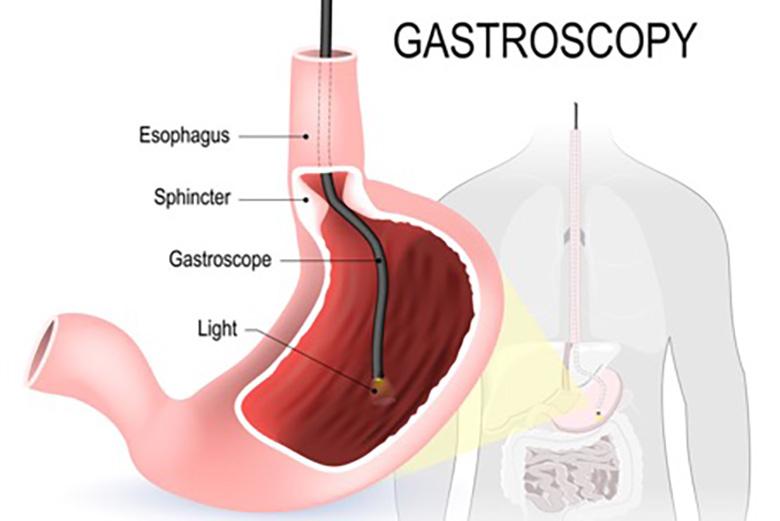What is a gastroscopy?

Gastroscopy, also known as upper gastrointestinal endoscopy, is a safe and minimally invasive examination to view the lining of the oesophagus (food pipe), stomach and small intestine.
It is used to diagnose stomach problems and perform biopsies (tissue samples for further study).
How it works
In a gastroscopy, your doctor will insert a long and flexible tube called a gastroscope through your mouth and carefully push it down the oesophagus to the stomach and the small intestine.
Why do you need a gastroscopy?
Your doctor may recommend a gastroscopy for the following reasons:
Diagnostic examination
If you have the following symptoms, your doctor may recommend a gastroscopy:
- Nausea
- Vomiting
- Heartburn
- Difficulty swallowing
- Upper abdominal pain that does not go away
- Unexplained weight loss
- Bloating
Routine screening
If you have a history of ulcers or polyps, a gastroscopy allows your doctor to:
Treatment
Your doctor may use a gastroscopy to:
- Stop any bleeding from ulcers
- Remove a foreign body you might have swallowed by accident, such as a fishbone
- Remove polyps (non-cancerous growths)
- Remove small stomach tumours
What are the risks and complications of a gastroscopy?
There are small risks of possible complications associated with gastroscopy. These include:
- Reaction to the sedation
- Burning sensation at the site of injection
- Bleeding due to accidental damage to a blood vessel
- Breathing difficulties
- Irregular heartbeat
How do you prepare for a gastroscopy?
To prepare for a gastroscopy, you:
- Should not consume any food for 6 – 8 hours before the procedure.
- Should not consume any fluid 2 – 3 hours before the procedure.
- Might need to stop taking medications for a period of time before the procedure.
- Might want to arrange for someone to drive you home after the procedure and to stay with you for at least 24 hours.
Once your gastroscopy is scheduled, your doctor will provide you with more detailed advice. Learn more about preparing your bowels before a gastroscopy.
What can you expect in a gastroscopy?
The procedure is performed under local anaesthesia.
Estimated duration
A gastroscopy is a short procedure that takes about 10 minutes.
Before the procedure
Your doctor:
- Will administer a local anaesthetic spray to numb your throat
- Will place a small plastic mouth guard in your mouth to hold it open and protect your teeth
- May give you a sedative to help you relax
During the procedure
You will be asked to lie down sideways facing your left. As your doctor inserts the endoscope into your throat, you need to swallow to help it move down. This may feel uncomfortable initially, and cause you to feel sick or gag.
As the endoscope moves down the oesophagus, your doctor may:
- Observe the upper digestive tract for any abnormalities through images that are transmitted from the endoscope to the monitor.
- Blow air gently into the stomach to allow for a better view to detect any unusual redness, holes, lumps, blockages or other abnormalities.
- Remove a biopsy (tissue sample) if your doctor detects any abnormalities. This procedure is painless and you will not feel it.
Care and recovery after a gastroscopy
Once the examination is completed, your doctor will gently pull the endoscope out through your mouth. You will rest for about 1 hour at the recovery area until the sedative begins to wear off.








